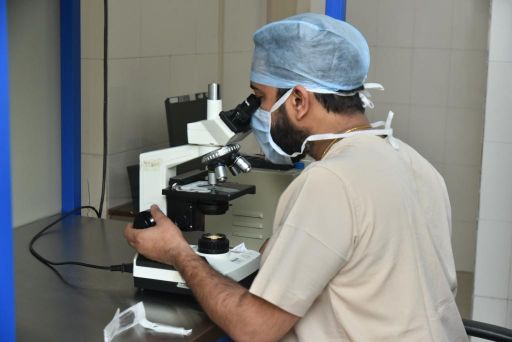The Different Stages of an IVF Cycle: Explained
Do you cringe just hearing the term in vitro fertilisation (IVF)? There is no need to worry, though, as IVF has been used successfully to help deliver healthy kids all around the world for the past 40 years. It is one of many medical interventions and technologies that are used today in all types of surgeries, and it can contribute to the success of the operation. IVF treatment in Powai is one of them. The process of natural fertilisation in a woman’s fallopian tubes is bypassed during the multi-stage in vitro fertilisation (IVF) technique. A culture medium allows an egg and sperm to fuse successfully outside the body. Dr L H Hiranandani Hospital will perform the procedure.
The following phases are involved, and each one must be completed successfully for the couple to move on to the next
1) Preparatory phase
The medical facility will carefully review both spouses’ medical histories, conduct a physical exam, and obtain their informed consent before starting IVF. Additionally, a variety of blood tests may be requested to rule out or identify a variety of infections, particularly those that are transmitted by the blood or through sexual contact.
2) Suppressing (down regulating) the natural hormone cycle
For around two weeks, hormones are delivered to women who are ovulating at a suppressive dose, either orally or through a nasal spray.
3) Controlled ovarian hyper stimulation
Several ovulations are induced using a variety of techniques to aid in the development of multiple embryos. Pituitary suppression of these hormones is first accomplished by pre-treatment with a long-acting gonadotropin-agonist in order to prevent premature ovulation brought on by the secondary over secretion of gonadotropin hormones (Lupron).
Daily gonadotropin injections are administered to promote ovarian follicular development once measurements indicate that the desired level of suppression has been reached. With ultrasound imaging and hormone level testing, the development of the follicles is closely monitored.
Human chorionic gonadotropin (HCG) is given once the lead follicle has grown sufficiently, which typically takes place after about 12 days, to mimic the luteinizing hormone (LH) spike that initiates ovulation in a natural environment. The environment is now prepared for oocyte retrieval in roughly 36 hours.
4) Oocyte retrieval
Transvaginal follicular aspiration is used to remove the oocytes from the follicles in both ovaries under ultrasound supervision. Under anaesthesia, the procedure is carried out. Some vaginal bleeding is one of the side effects, along with minor cramps and pain. Progesterone pessaries, injections, or gels are recommended after egg retrieval to get the endometrium ready for implantation within five days following fertilisation. IVF center Mumbai cultivates the oocytes until they are ready for insemination using a specific media
Human chorionic gonadotropin (HCG) is given once the lead follicle has grown sufficiently, which typically takes place after about 12 days, to mimic the luteinizing hormone (LH) spike that initiates ovulation in a natural environment. The environment is now prepared for oocyte retrieval in roughly 36 hours.
5) Fertilization
Oocytes and sperm are combined at this stage and left alone in a specific medium to allow fertilisation to take place. The sperm utilised determines the technique of fertilisation. In the event that the partner has normal sperm available, between 50,000 and 100,000 motile sperm are added to the plate containing the oocytes. We refer to this as normal insemination. On the other hand, the intracytoplasmic sperm injection (ICSI) method is preferred if normal motile sperm are not available. Under a powerful microscope, single sperm are selected using micro needles and then injected directly into the cytoplasm of the egg.
In spite of the presence of oligospermia, azoospermia, asthenospermia, or teratozoospermia, fertilisation is still able to happen because of this. If there are no sperm in the sample, sperm can be extracted straight from the testicular tissue. Since they are immature when extracted, such sperm are always used for IVF using ICSI.The oocytes are tested for fertilisation success after 16 to 20 hours. All of the embryos created at this point are allowed to develop for up to five days in an incubator in the lab. They have developed into blastocysts at this point.
Blastocysts are fluid-filled balls of cells that are substantially larger than zygotes. The higher their quality and the more likely it is that implantation will be successful, the better they expand.
6) Embryo transfer
Due to the fact that spontaneous implantation takes place at the blastocyst stage, blastocyst transfer is done to maximise the likelihood of successful implantation (day 5 following fertilization). As implantation is more likely at this stage, it is also possible to transfer one or two embryos rather than three or more.
On the other hand, the transfer is carried out on the second or third day itself, which is referred to as the cleavage stage, if the embryos are of low quality or the level of fertilisation is low. Between four and eight cells make up the embryo. The quantity of cells, how they are distributed, and whether or not there is fragmentation are used to determine the quality of an embryo. Then, only the healthiest embryos are chosen for transfer. If any healthy embryos are left behind, they can be frozen and kept for use in upcoming cycles.The age of the woman affects how many embryos are transferred. Up to three embryos may be implanted into the uterus for patients over the age of 40. In order to lower the chance of multiple pregnancies in women younger than this, only up to two embryos are used per cycle. In many situations, a single embryo transfer is advised.
The embryos are inserted into the uterus through the cervix during this process while the vagina is being seen using a speculum and under ultrasound guidance. To get a clear ultrasound image, the urine bladder is kept full. While there shouldn’t be any discomfort during the embryo transfer, the swollen bladder might.
Progesterone supplementation is continued up until a pregnancy test, usually conducted 12 to 14 days after embryo transfer, confirms the pregnancy. It is possible to get the best IVF hospital in Mumbai once the best ones have been transferred and all extra embryos are frozen and stored for future use.
IVF – male component
The following actions are necessary for men:
When sperm samples are provided, they are cleaned and ready for separation. During this procedure, the high-quality, motile active sperm are isolated for usage from the sluggish, low-quality ones. The Dr L H Hiranandani Hospital can provide IVF treatment in Powai. If samples were previously given for freezing and storage, they are now prepared for the separation of the highest-quality sperm from the specimen by being thawed.





There are no comments